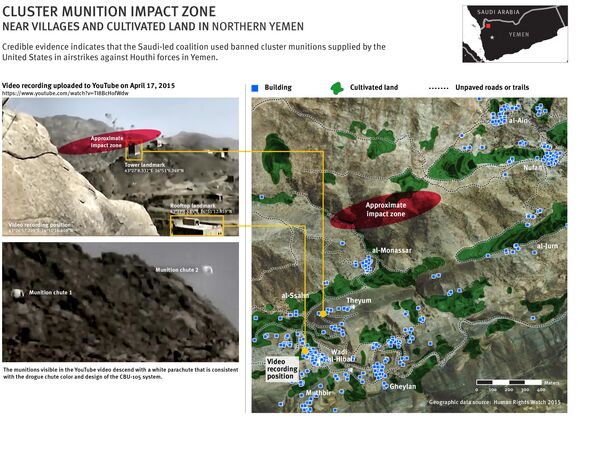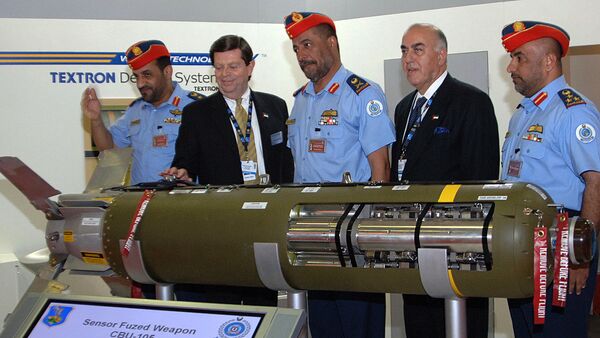The Saudi-led coalition uses internationally prohibited cluster munitions, supplied by the United States, in airstrikes against Houthis in Yemen, Human Rights Watch reported Sunday.
Human Rights Watch obtained a video and photographs that allegedly indicate the use of cluster munitions in attacks on a Houthi stronghold in Yemen's Saada governorate on the border with Saudi Arabia.
The video shows strange objects parachuted from the sky on April 17.
Analyzing the photographs taken and provided by a Saada resident on the same day, the watchdog identified the banned CBU-105 Sensor Fuzed Weapons with submunitions, manufactured by US Textron Systems Corporation and shipped to Saudi Arabia in compliance with a 2013 contract.

Types of bombs being parchuted by Saudi warplanes in Saada N #Yemen pic.twitter.com/jA8kRA9t9d
— Fatik Al-Rodaini (@Fatikr) 27 апреля 2015
Using satellite imagery, the watchdog found out that the alleged cluster bombs were dropped on a cultivated plateau near a populated village.

HRW arms director Steve Goose said:
"Saudi Arabia and other coalition members — and the supplier, the US — are flouting the global standard that rejects cluster munitions because of their long-term threat to civilians."
Cluster munitions are either ground-launched or air-dropped explosives that disseminate a cloud of bomblets targeting vehicles and personnel. Those indiscriminate weapons can blanket a wide area and thus result in unplanned civilian casualties. Moreover, some of the bomblets do not go off at once and become landmines.
Since March 26, a Saudi-led international coalition has been conducting airstrikes on positions of the Yemeni Houthi faction that took control of large areas across the country. The operation began upon the request of Yemeni President Hadi who had been forced to flee from the country.



